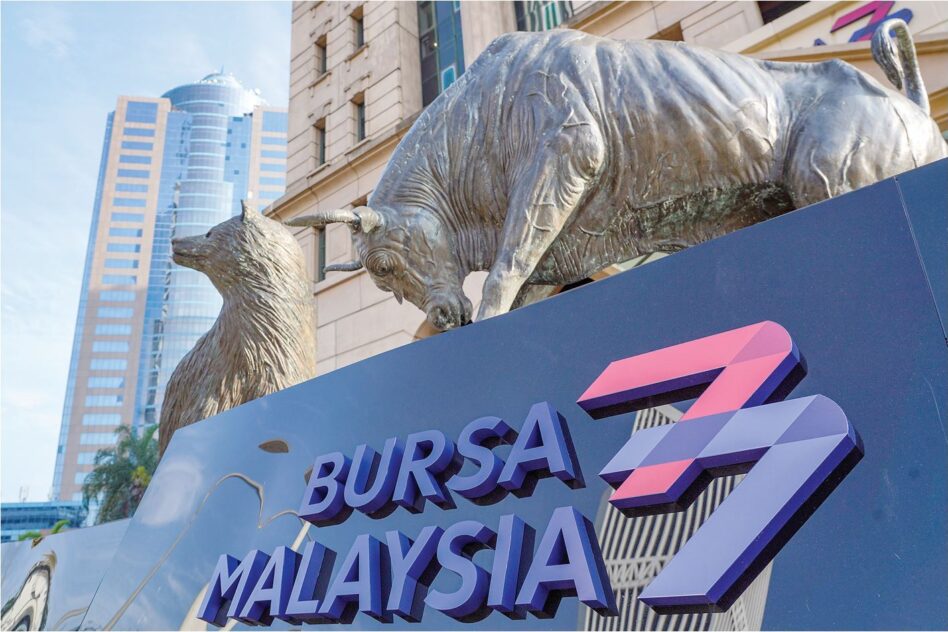MIDF Research has maintained its neutral outlook on the banking sector as it expects the prolonged movement control order (MCO) to have an impact on loan growth and asset quality.
It said loan approvals saw a bigger contraction of 22.5% yoy versus the expansion of 23.2% yoy the previous month. It is possible that this was due to banks becoming more cautious as Covid-19 becomes more widespread.
This resulted in a decline in 1QCY20 of 4.3% yoy. The total system deposits grew 2.1% yoy, lower than the 2.6% yoy as at February CY20. This was due to marginal fixed deposits decline of -0.3% yoy to RM0.99 tril.
“We believe that this suggests that banks continue to pace themselves in the uncertainty and another potential OPR cut.
“Our top picks are the three D-SIB banks due to their solid fundamentals, scale and size. Also, being systemically important banks will ensure support should there be any stress to asset quality,” said MIDF.
It favoured Maybank (buy, TP: RM8.00), CIMB (buy, TP: RM4.30) and Public Bank (trading buy, TP: RM17.00). Additionally, the attractive dividend yield will also cushion any downside risk.
Meanwhile, Affin Hwang Capital said banking system loans grew by 4% yoy in March 2020 and 0.5% mom driven by more demand for credit from businesses rather than households.
The Covid-19 pandemic and implementation of the MCO since March 18 had caused unprecedented challenges to business activities and shifted the supply-demand dynamics.
“On a year-to-date basis, we note that household loan growth has been flat while business loans grew by 1.7% ytd. We maintain our assumption of a 3% yoy decline in system loans, while not discounting the possibility of a further increase in system impaired loans,” said the research firm.
On May 6,, the Ministry of Finance and the banks had reached an agreement to waive additional interest and profit charges on deferred HP financing instalments during the six-month moratorium period.
“We expect a Day-1 modification loss charge to the banks’ P&L to the tune of RM3.4 bil or c. 13% of 2020 sector net earnings,” said Affin Hwang.
It has maintained an underweight stance on the banking sector. It sees the banking system loans being affected by the shift in demand for more credit by sectors such as the manufacturing, transportation/storage, energy/utility, wholesale/retail, which need additional loans to sustain under challenging operating conditions or to cope with an unexpected surge in demand (such as e-commerce business, warehousing, delivery services, food production, packaging materials).
Loan growth trends in March are as follows: i) Business loans saw a 4.2% yoy growth, while mom was up by 1.6%. Disbursement activities have been robust, +16.1% mom (underpinned by financing activities, manufacturing, energy/utility).
There were more loan approvals for transportation, manufacturing and retail sectors. ii) Household loans were up 3.7% yoy, mainly driven by growth in residential mortgages and personal financing in particular. New loan approvals and loan applications declined mom by -12.5% and -14.4% respectively, due to economic uncertainties.
Banking system liquidity coverage ratio (LCR) remains ample but is expected to decline further The banking system continues to operate at a comfortable LCR of 141%, while the loan-to-fund ratio remains ample and relatively unchanged at 83.2% in March.
Affin Hwang expects the banking sector’s LCR and net stable funding ratio (NSFR) to decline in the next six months in light of the liquidity needs of the banks during the six-month moratorium period (which was granted to all individual accounts (except for credit cards and SME loans).
To recap, BNM has given banking institutions some leeway in their LCR (can operate below 100%) and the net-stable-funding-ratio (NSFR) requirement, which has been lowered to 80% (and to revert to 100% from Sept 30, 2021).
Commercial banks’ average lending rate (ALR) edged down 20bps mom to 4.40% in March (from 4.6% in February), driven by the additional 25bps rate cut in March.
Coupled with the third cut on May 5 and another anticipated 25bps cut in the near term, Affin Hwang is forecasting 2020E NIM to decline to 1.9% (vs 2.1% in 2019) and recovering subsequently to 1.95% in 2021E.
The system gross impaired loans (GIL) ratio continued to edge up to 1.59% in March 2020 (from 1.57% in February 2020), while the outstanding impaired loans rose by 5.7% ytd, attributable to some stress in lending to certain sectors, such as financing activities (including lending to brokers, money-lenders, non-bank lenders), household, transportation and manufacturing sectors.
Notably, the working capital, residential property, construction and commercial property segments make up the bulk of impaired loans.
As Public Bank, Maybank, CIMB, AMMB and Affin have the largest exposure in the domestic HP market, they are expected to take a bigger hit on their income statement as a Day-1 “modification loss” is being charged.
“We estimate that at the industry level, the Day-1 ‘modification loss’ could go up to RM3.4 bil (about 13% of our sector net profit, based on a seven-year tenure outstanding of the HP loan/financing (RM157.4 bil), with PV of cash flows discounted at an effective interest rate of 4.53%,” Affin Hwang said. — May 8, 2020










